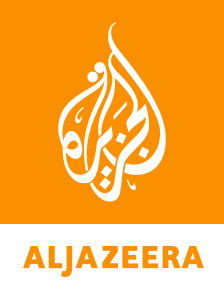United States President Donald Trump has announced that US sanctions on Syria will be lifted, in a huge boost to the government in Damascus, which took power after the overthrow of longtime leader Bashar al-Assad in December.
“There’s a new government that will hopefully succeed in stabilising the country and keeping peace,” Trump said in Saudi Arabia on Tuesday, the first of a three-day visit to the Middle East, including Qatar and the United Arab Emirates. “I will be ordering the cessation of sanctions against Syria in order to give them a chance at greatness.”
Trump is also expected to meet Syria’s president, Ahmed al-Sharaa, in Riyadh on Wednesday, in a further signal to the world that the international isolation of Syria should end.
In Syria, the news has been met with celebrations in the capital, Damascus, and elsewhere. There is hope the move will help turn around the country’s economy after more than a decade of war.
Let’s take a closer look.
What sanctions had been placed on Syria?
The US was just one of many countries that had placed sanctions on Syria during the former al-Assad regime, which governed the country from 1971 to 2024.
The US sanctions were wide-ranging. The US initially designated Syria a “State Sponsor of Terrorism” in 1979, which led to an arms embargo and financial restrictions, including on foreign assistance.
Further sanctions were imposed in 2004, including more arms export restrictions and limits on Syria’s economic interactions with the US.
After the war in Syria began in 2011, and al-Assad’s regime started attacking civilian antigovernment protesters, numerous other wide-ranging sanctions were imposed on Syria and regime-linked individuals. This included a freeze on Syrian government assets held abroad, a ban on US investments in Syria and restrictions on petroleum imports.
The US had also announced a $10m reward for the capture of Syria’s current leader, al-Sharaa, and listed Hayat Tahrir al-Sham, the organisation he ran before its dissolution with the fall of al-Assad, as a “Foreign Terrorist Organization”.
Why was Syria under sanctions?
The main tranche of sanctions was imposed during the early years of Syria’s war, when the US was supporting the country’s opposition and attempting to isolate the al-Assad regime, pointing to its human rights abuses, including the use of chemical weapons.
The “terrorist” designation placed on Hayat Tahrir al-Sham was a result of its former association with al-Qaeda. This was one of the reasons there has been international wariness to remove sanctions on Syria even after the fall of al-Assad.
Why are they being lifted now?
Al-Sharaa has slowly been gaining international legitimacy for his government since it came to power in December. The US had already removed the reward for his capture, and the Syrian president has been able to travel internationally and meet world leaders, including in Saudi Arabia and France.
The new Syrian government has made a concerted effort to present itself as a moderate force that could be acceptable to the international community, including by distancing itself from designated “terrorist” groups, promising to cooperate with other countries on “counterterrorism” efforts and making statements supporting minority rights. The latter has been particularly important in light of sectarian fighting involving pro-government forces and minority groups after the fall of al-Assad.
The Reuters news agency also reported this week that Syria has attempted to convince the US that it is not a threat but a potential partner, including by saying it was engaged in indirect talks with Israel to deescalate tensions with the US’s Middle eastern ally – despite Israel’s bombing of Syria and occupation of its territory. There had also been talk of US-Syria business deals, even including a Trump Tower in Damascus.
Trump on Tuesday said that his decision to end the sanctions came after discussions with Saudi Arabia’s Crown Prince Mohammed bin Salman and Turkish President Recep Tayyip Erdogan.
“Oh, what I do for the crown prince!” he said.
Speaking to Al Jazeera, Omar Rahman, a fellow at the Middle East Council on Global Affairs, said that US relationships with Saudi Arabia, Qatar and the UAE – all countries that had been pushing for an end to sanctions and support for the new Syrian government – had been an integral part of Trump’s decision.
“This wasn’t something that was too difficult for Trump to do,” Rahman said. “He didn’t need to get permission from anybody. He didn’t even need consent from Congress.”
Will investment now pour into Syria?
Because of the central role the US plays in the global financial system, the lifting of sanctions is a signal to the world that it can do business in Syria.
The sanctions had been economically debilitating for Syria, and presented a huge impediment for the new government, which is under pressure to improve living standards in a country where unemployment and poverty levels are high, and electricity blackouts are common.
Whether the US itself invests in Syria remains to be seen, but increased Arab and Turkish investment is likely.
“[The removal of sanctions] takes away a key obstacle in [Syria’s] ability to establish some kind of economic development, economic prosperity,” Rahman told Al Jazeera. “But there are plenty of other obstacles and challenges the country is facing.”

 5 months ago
84
5 months ago
84









 English (US) ·
English (US) ·